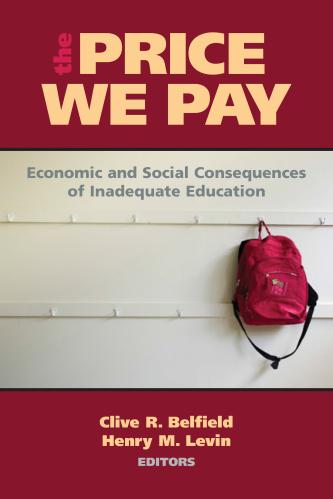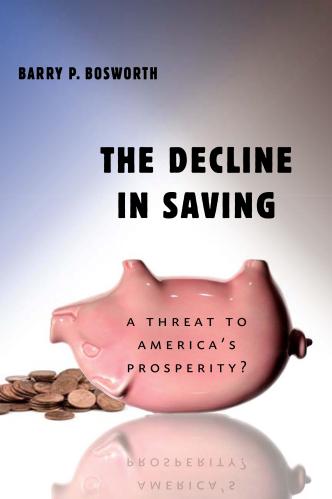Though crime rates in the U.S. have declined since 1990, incarceration rates have been on the rise over the past several decades. The U.S. now holds one-fourth of the world’s inmates, and at nearly 700 people per 100,000 Americans, the incarcerated population represents approximately 1 percent of the entire adult population.
In addition to straining the criminal justice and prison systems, these high rates of incarceration have resulted in a large population of formerly incarcerated individuals across the United States. And for many of these Americans, life after prison can prove challenging.
From difficulty reintegrating into their communities and the workforce, to navigating the long-lasting consequences a criminal conviction can have on one’s life, new Hamilton Project research explores the difficulties faced by Americans with criminal records and offers policy solutions for addressing them. As the authors put it, successful reintegration is not just a concern for those who return from prison: it is a matter of public safety and economic necessity.
These are some of the biggest challenges facing the formerly incarcerated population—and some concrete policy solutions for addressing them.
Abrupt transitions from prison to communities can be difficult—and even deadly
Around 50 percent of released prisoners return to the prison system within three years, either for new crimes or for violating the conditions of their release. According to Angela Hawken and Mark A.R. Kleiman, these troubling statistics are associated with a failure to help former inmates transition successfully back into their communities. The abrupt transition out of prison can be extremely difficult for many individuals, leading to stress, recidivism, and even elevated mortality rates.

One solution, argue the authors, would be to smooth the pathway from prison to freedom through a process called “Graduated Reintegration.” Drawing on best practices from work release, furlough, and halfway house programs, Graduated Reintegration would allow prisoners to move from their cells to supported housing prior to their scheduled release dates.
Graduated Reintegration would subject participants to prison-like rules, but in a non-prison setting where compliance and achievement would be rewarded with increased freedom, and noncompliance sanctioned with increased restrictions. The authors hope to shorten prison stays for inmates while providing both supervision and services designed to make the transition into the community successful.
The consequences of a criminal record are far-reaching and long-lasting
The consequences of a criminal conviction—or even an arrest that does not lead to conviction—often last long beyond any imposed sentence or supervision. Anne Morrison Piehl explains that these consequences can include everything from voting bans to ineligibility for Temporary Assistance for Needy Families (TANF) and Supplemental Nutrition Assistance (SNAP), to denial or revocation of occupational licenses that are legally required for employment. Moreover, these consequences can extend long after release from prison and late into an individual’s life—even though evidence suggests that their chances of re-arrest decrease significantly over time.

In order to mitigate these and other consequences of criminal records, Piehl offers three principles for reform efforts aimed at reducing criminal justice punitiveness. Her approach focuses on addressing the negative consequences of prior convictions, implementing time limits on information about convictions, and decreasing the severity of criminal punishment automatically and retroactively.
Americans with criminal records struggle in the labor market
According to Economic Studies Nonresident Fellow Jennifer L. Doleac, workers with criminal records—especially black and Hispanic males with criminal records—face imposing challenges when it comes to finding jobs. Moreover, Doleac argues that these employment challenges extend far beyond the individuals enduring them, and have serious implications for public safety, the economy, and the families of those with records.

Though new “Ban the Box” laws have attempted to address this concern, Doleac points out that they have likely had unintended negative consequences for the employment prospects of some individuals, and new policies must take this into consideration.
So what policy solutions should lawmakers explore next? Doleac argues that “a multi-pronged approach—inclusive of effective policies aimed at building workers’ skills, communicating their work-readiness to employers, and promoting robust labor markets for low-skilled workers,”—is the best path forward for improving employment outcomes for workers with criminal records.
How to improve second chances via improved reentry
Though many formerly incarcerated Americans face significant challenges, new policy changes could help. On October 21, The Hamilton Project hosted a forum exploring policy options aimed at creating more opportunities for people with criminal records and facilitating successful reentry for formerly incarcerated individuals. Watch a variety of criminal justice and economics experts discuss these issues below, and learn more about the event here. For context helpful to understanding these issues, read The Hamilton Project’s “Twelve Facts about Incarceration and Prisoner Reentry.”
The Brookings Institution is committed to quality, independence, and impact.
We are supported by a diverse array of funders. In line with our values and policies, each Brookings publication represents the sole views of its author(s).




Commentary
New research explores the challenges formerly incarcerated Americans face
October 28, 2016